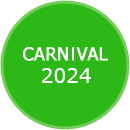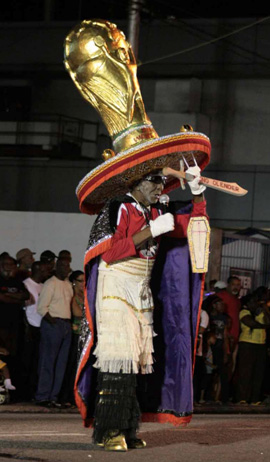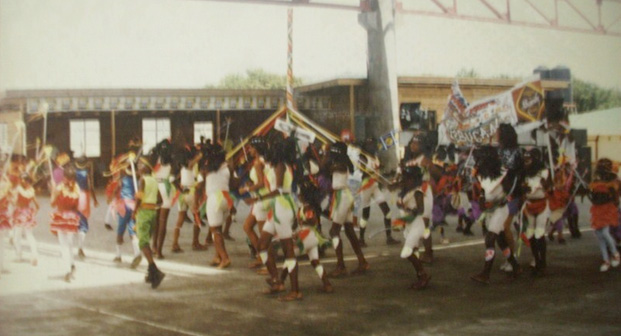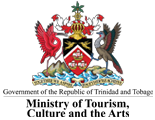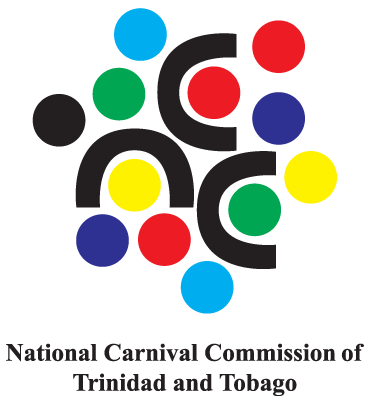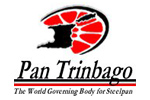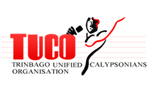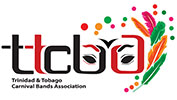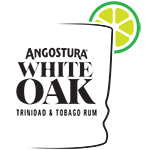Traditional Mas Characters - Negue Jadin
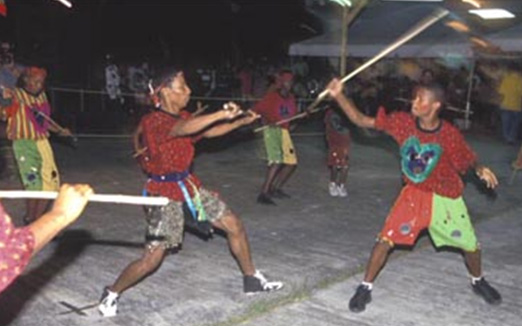
(photo courtesy Bernard De Peaza, Creatures of the Mas, Caribbean Beat Magazine http://caribbean-beat.com/issue-71/creatures-mas#axzz3h6SuvXZa)
Stickfighters in partial Negue Jadin costume
This now extinct character, owes its origins to pre-emancipation days; a time when Carnival was celebrated exclusively by the plantocracy. While the slaves and free coloureds were confined to their own segregated celebrations, the plantocracy, on the other hand, was free to imitate the dress and customs of their slaves. The Negue Jadin (or field slave) was one such beloved Carnival costume.
Upon the abolition of slavery, former slaves were free to celebrate and adopted the Negue Jadin character in their celebrations, albeit ironically.
This costume consists of a mask, tight-fitting satin or khaki breeches, a bright, plain coloured shirt with a decorated "fol" (heart-shaped panel of contrasting colour sewn on the chest and bordered with swans down). The 'fol' was sometimes decorated with tiny mirrors and rhinestones.
Currently, the Negue Jadin costume is incorporated in various other traditional carnival celebrations, including the Calinda (stickfighting).






